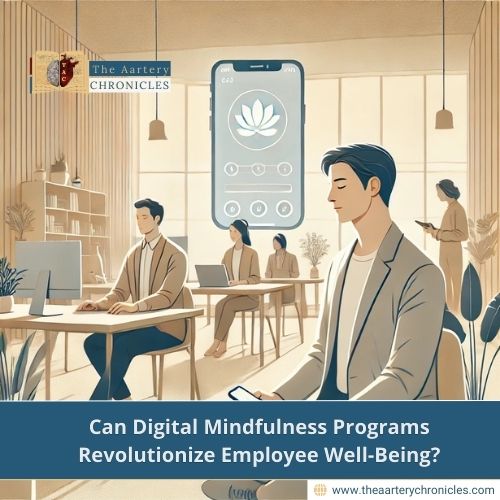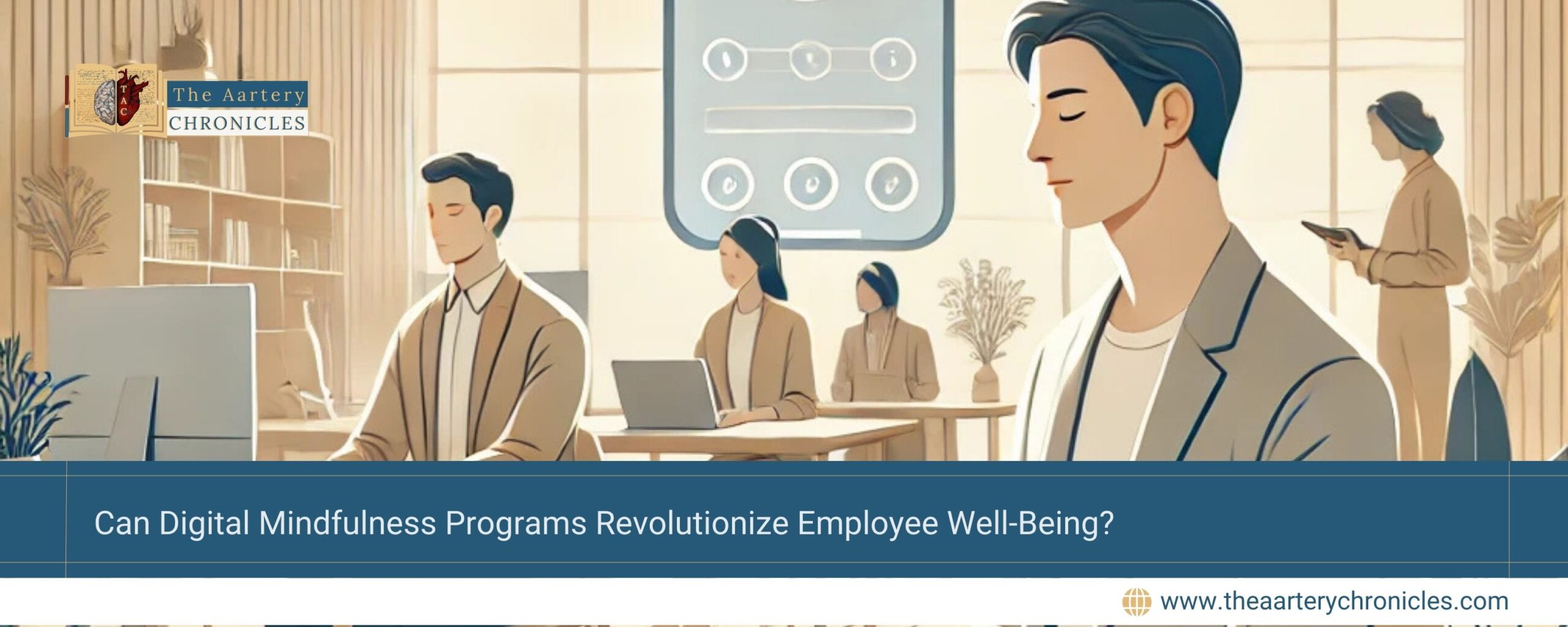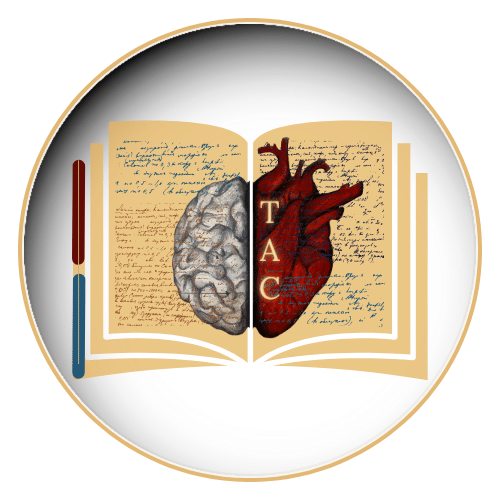

How Digital Mindfulness Programs Boost Employee Well-Being and Productivity
The COVID-19 pandemic has left a lasting impact on mental health in the United States, with workplace stress emerging as a key concern. This stress doesn’t just affect emotions; it takes a toll on physical health, leading to high absenteeism and reduced productivity. Shockingly, work-related stress accounts for about 8% of U.S. healthcare costs, and nearly half of healthcare providers report burnout.
So, how can employees combat this growing challenge? Enter digital mindfulness programs—a modern, accessible solution that’s changing the game for workplace mental health.
Why Mindfulness is important in the Workplace
Mindfulness meditation is a time-tested method for managing stress. By encouraging present-moment awareness and emotional regulation, it helps individuals stay calm and focused. However, traditional in-person mindfulness programs are often expensive and difficult to implement at scale, leaving many employees without access.
Recognizing this gap, researchers from the University of California, San Francisco (UCSF) decided to investigate whether digital mindfulness—delivered through smartphone apps—could be a practical alternative.
UCSF Study: How Digital Mindfulness Transforms Employee Health
A groundbreaking study by UCSF’s Department of Psychiatry and Behavioral Sciences explored the benefits of digital mindfulness for over 1,400 employees. Participants were randomly assigned to use the popular meditation app, Headspace, or to a waitlist control group
The results, published in JAMA Network Open, were remarkable. Employees who meditated using Headspace reported:
- Reduced stress, anxiety, and depression
- Lower job strain and burnout
- Improved mindfulness and work engagement
Even better, these benefits persisted for four months after the program ended
Just Five Minutes a Day Can Make a Difference
One of the most exciting findings? Employees who practiced mindfulness for as little as five minutes a day experienced significant improvements in mental health and job satisfaction.
Dr. Rachel Radin, the study’s lead author, emphasized the lasting impact:
“Employees who meditated digitally reported sustained enhancements in well-being, mindfulness, and job engagement.”
Adherence played a critical role—consistent practice amplified the results, making it clear that even small, regular efforts can yield big benefits.
Scalable and Affordable: The Future of Workplace Wellness
Digital mindfulness programs like Headspace offer a scalable, cost-effective way to support employee well-being.
Co-senior author Dr. Aric Prather highlighted this advantage:
“It’s a low-cost, low-burden way to improve employee health on a large scale.”
Beyond reducing workplace stress, mindfulness also helps individuals cope with acute stress and trauma, such as natural disasters.
Dr. Elissa Epel, another senior author, described it as “psychological first aid,” reinforcing its broader applications.
Building Resilience Through Digital Mindfulness
The UCSF study proves that digital mindfulness is more than just a stress-reduction tool—it’s a pathway to resilience. By empowering employees to manage their mental health, these programs promote a healthier, more engaged workforce.
In today’s fast-paced work environment, digital mindfulness offers a beacon of hope for
- Improving mental health
- Boosting productivity
- Creating a more positive workplace culture
Start small! Just five minutes of digital mindfulness a day can pave the way for a happier, healthier you!
Source: Inputs from various media Sources

Dane
I am an MBBS graduate and a dedicated medical writer with a strong passion for deep research and psychology. I enjoy breaking down complex medical topics into engaging, easy-to-understand content, aiming to educate and inspire readers by exploring the fascinating connection between health, science, and the human mind.








